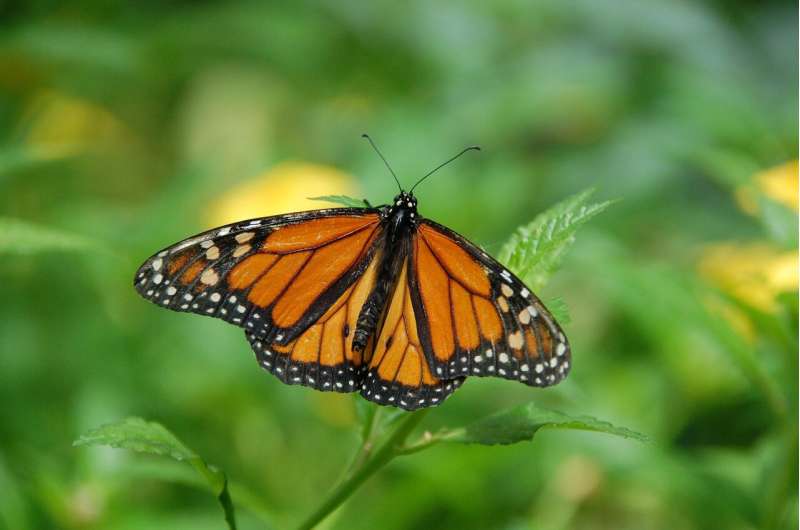Credit: CC0 Public Domain
It wasn't so long ago that orange clouds of monarch butterflies would descend upon the California coast every winter. The western population of the majestic butterfly migrates from nearby states to spend the cold months in groves of trees between Marin County and San Diego.
In the 1980s, there were millions of monarch butterflies wintering in California. Counts in 2018 and 2019 found only around 30,000 monarchs, less than 1% of the population's historical size. In November, volunteers counted just 2,000.
Habitat loss, pesticide use and climate change have whittled down the monarch butterfly population nationwide, but monarchs west of the Rocky Mountains have been especially hard hit. There's a very real possibility that the western population could disappear. Yet despite the dire situation, monarch butterflies do not have endangered-species protections.
A Sacramento Superior Court judge ruled last year that insects couldn't be protected under California's Endangered Species Act. The state is appealing the ruling, but ultimately the Legislature may need to make clear that butterflies, bumblebees and other insect species are eligible for state protection.
Conservation groups sought to add monarch butterflies to the federal list of threatened and endangered species in 2014. In the final months of the Trump administration, the U.S. Fish and Wildlife Service decided that while the butterflies meet the criteria for listing, they weren't a high enough priority to be listed yet. Essentially, monarchs were waitlisted for full protection. The Biden administration should reconsider that decision.
How much longer can authorities afford to wait? The Fish and Wildlife Service's scientists have estimated that there is a 96% to 100% chance that the western monarch population will collapse within 50 years. The eastern population, which is found east of the Rocky Mountains, has also declined dramatically; there is an 80% chance the eastern population could collapse in the same period.
The challenges facing monarch butterflies are many, but they are not insurmountable if there is an ambitious, coordinated effort to protect them. That means encouraging property owners to plant milkweed, the only plant monarch caterpillars eat. It also requires limiting the use of weedkillers that destroy the monarchs' food supply and insecticides that threaten pollinators, including butterflies and bees.
California has an even greater responsibility to act. Researchers think the precipitous drop in the western monarch population is largely due to the loss and damage of the butterflies' winter habitat. Coastal communities must protect the groves of trees that monarchs rely upon. When trees have to be felled, they should be replaced. Property owners can plant native flowering plants and milkweed and stop dousing gardens with pesticides.
It's inexcusable to allow such an iconic species to dwindle before our eyes. Monarch butterflies deserve immediate protection.
©2021 the Los Angeles Times
Distributed by Tribune Content Agency, LLC.
























